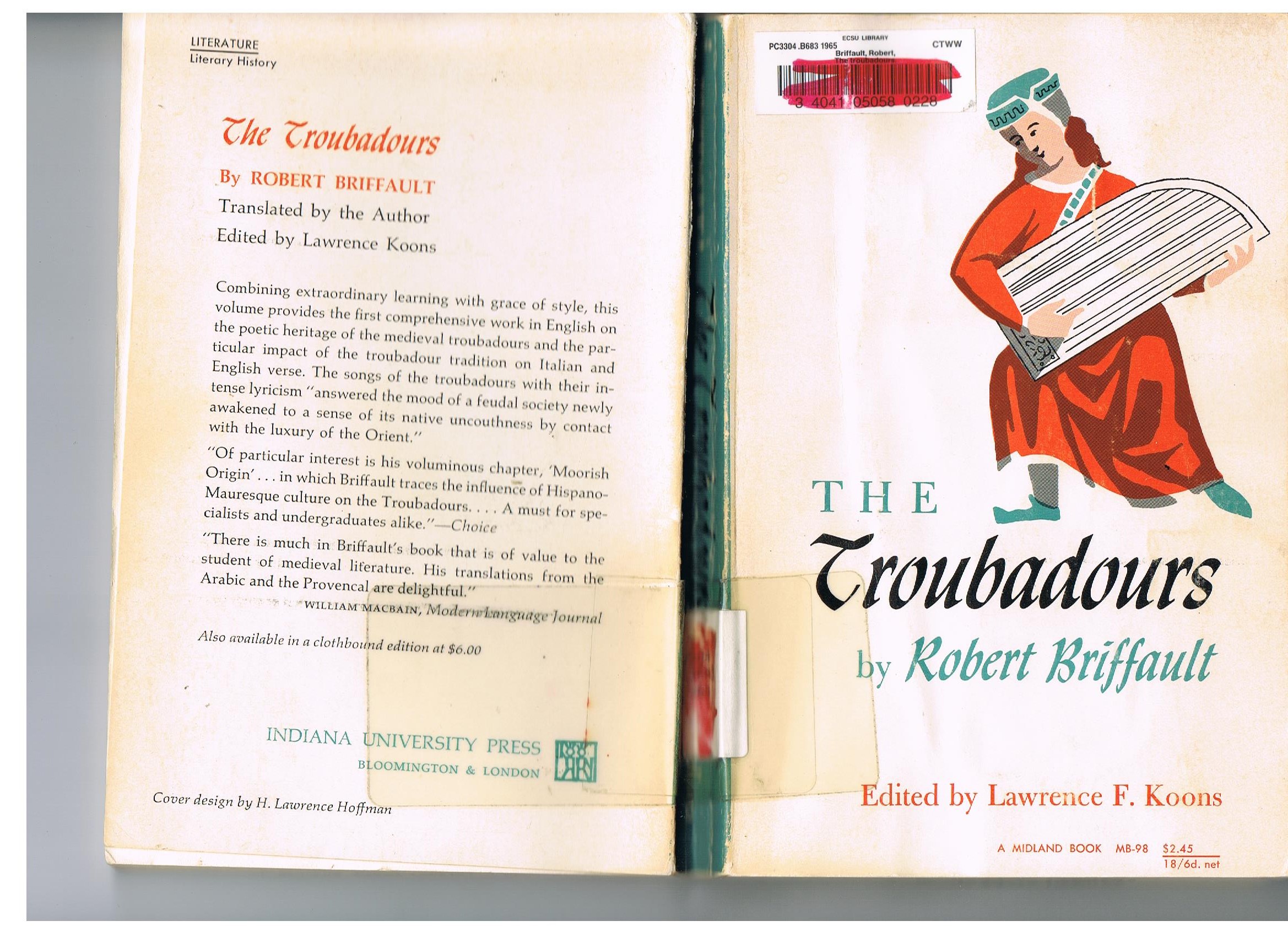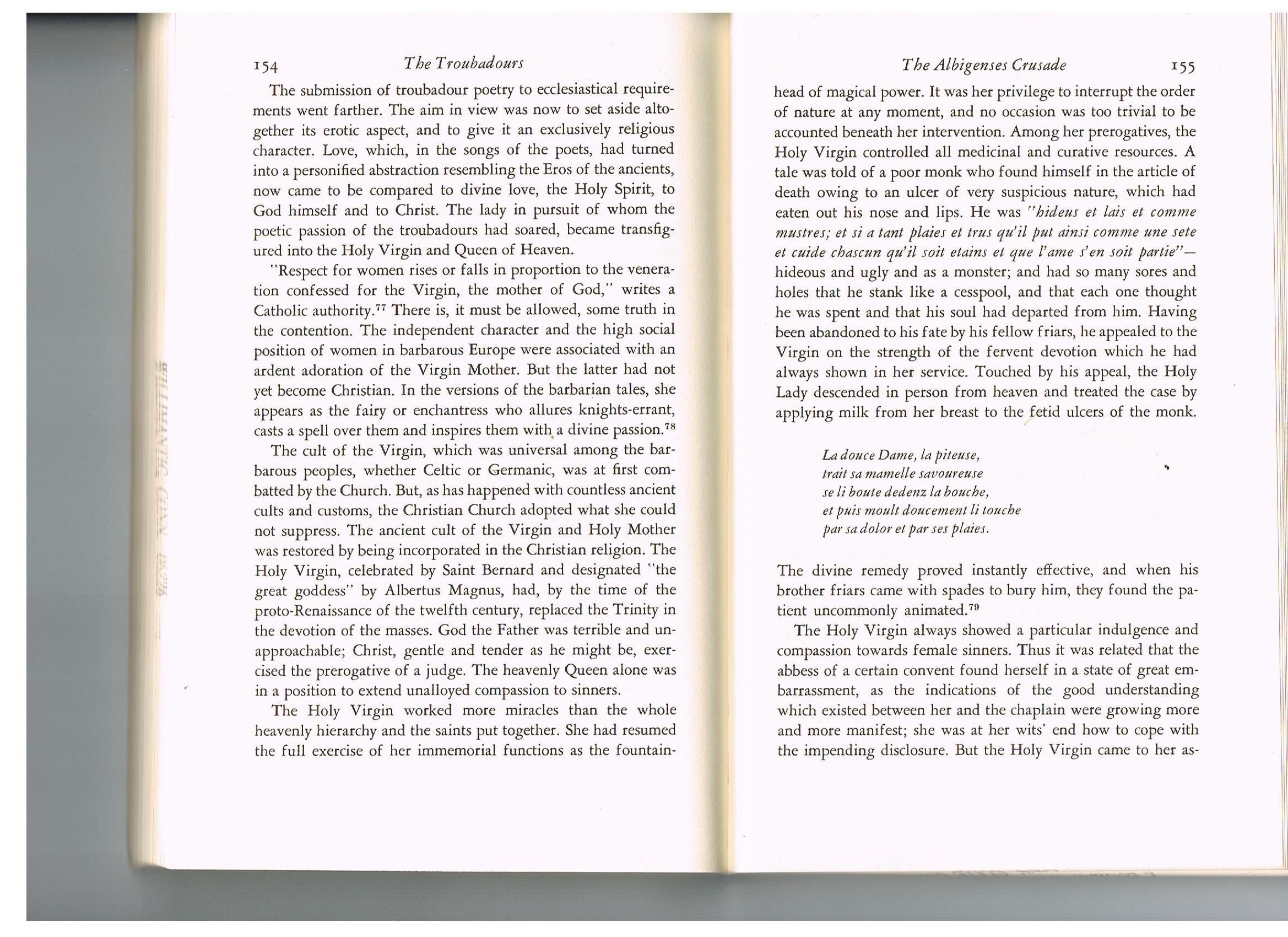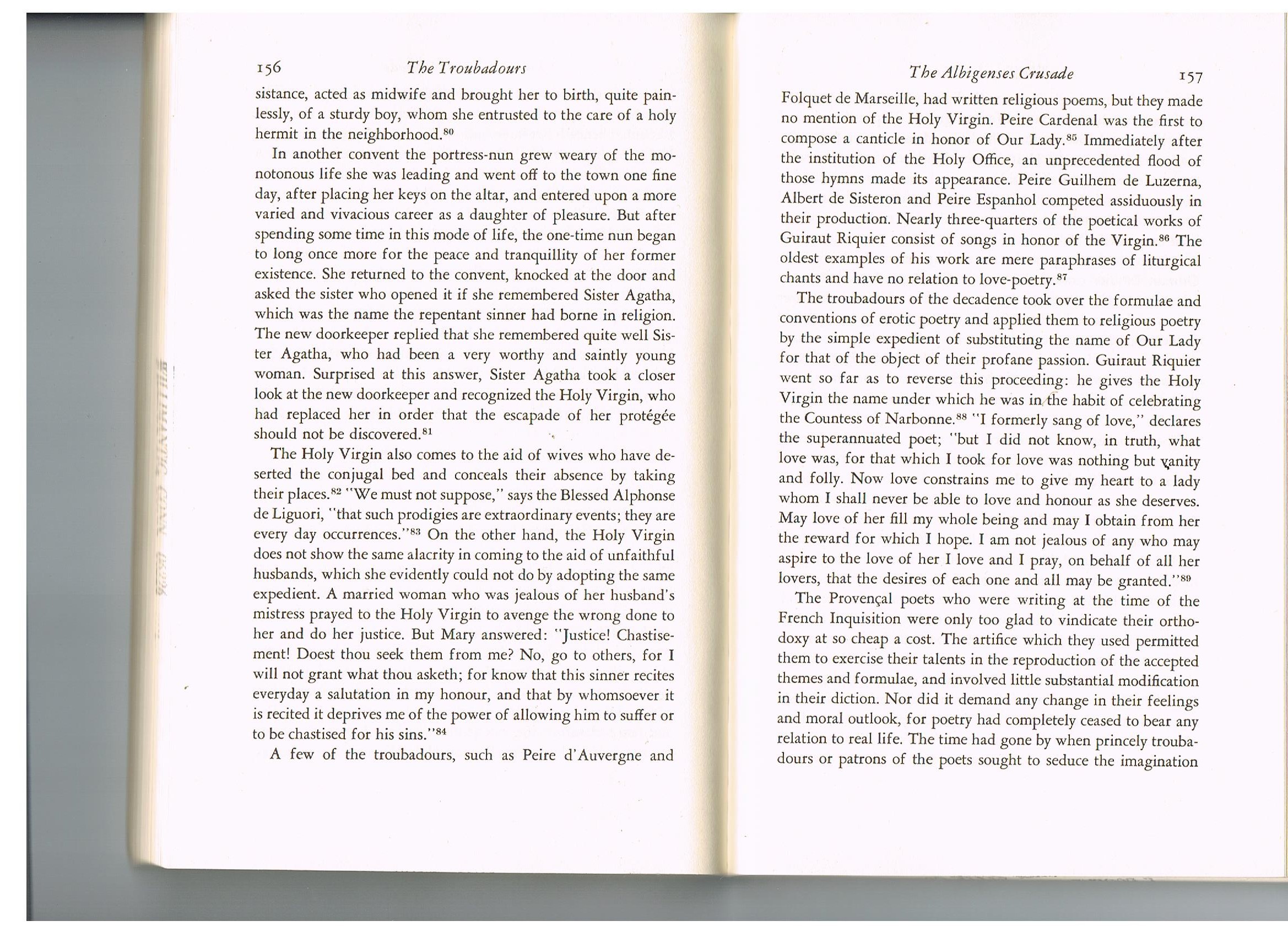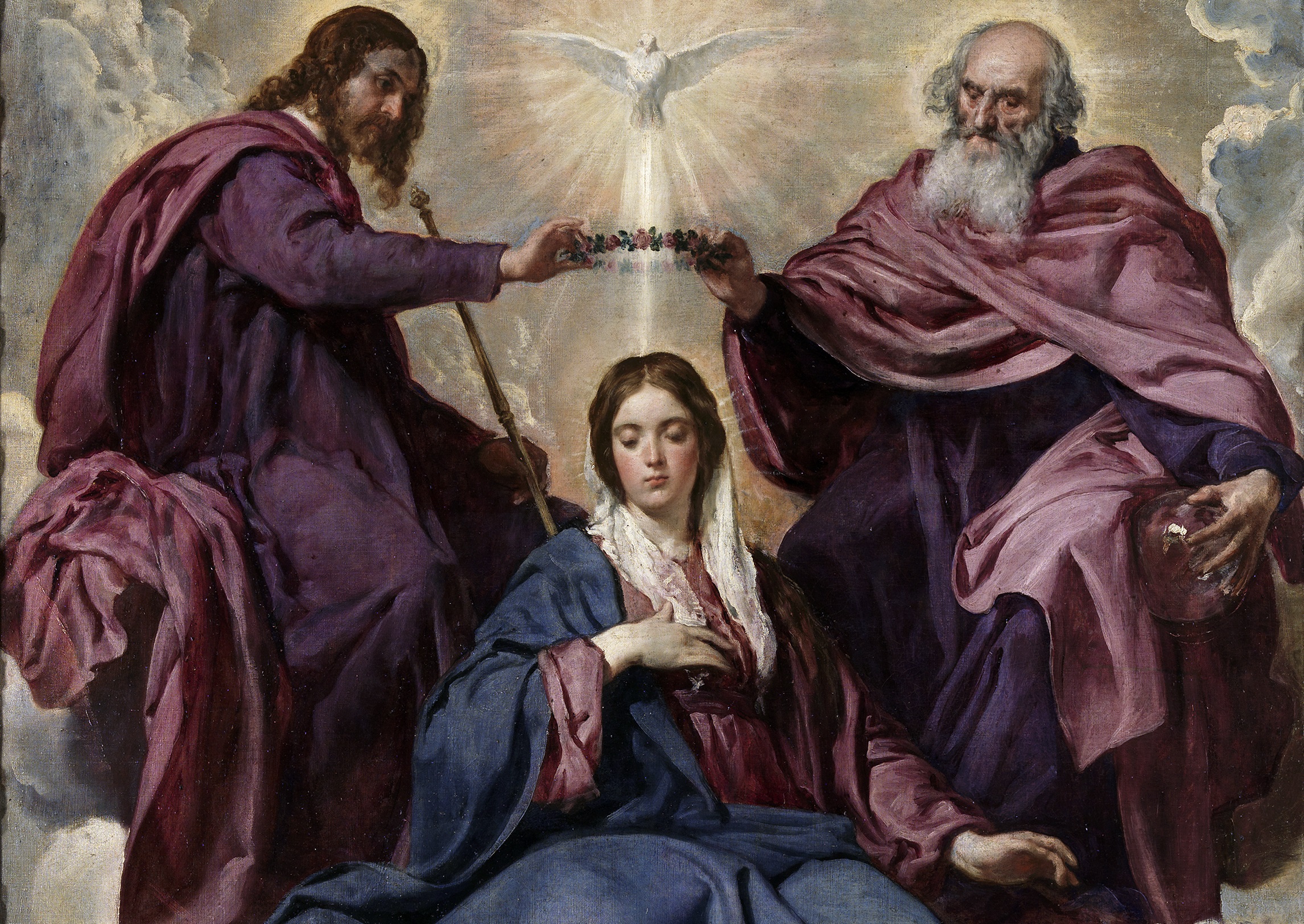
The following quotes (below) deal directly with lay Christian culture’s slow descent into gyneolatry as exemplified in many modern Churches. In a nutshell, the historical focus of lay Christendom evolved from the initial view that men and women are both born in original sin, to only men being so.
While official Church doctrine changed little in regard to original sin, with men and women being equal in their sinful inheritance, grassroots Christian attitudes toward gender began to evolve in the twelfth century. At this time there arose a new and heretical veneration of women as “counterparts of the Virgin Mary,” along with the rise of chivalry and courtly love, which had the effect of elevating women’s status and eclipsing the earlier emphasis on women inheriting original sin.
Like Mary, the notion of ‘woman’ as pure and holy became venerated among some laity.
After that change men continued to be viewed as sinners attempting to imitate Christ, whereas women were increasingly viewed, in popular heretical perspectives, as the Holy Virgin’s counterparts on earth, pure and perfect from the moment of birth, each a virgin with less focus on their need for redemption.
Said another way, after the Middle Ages various sects placed less emphasis on women’s inheritance from Eve, and more on her likeness to Mary. Even with the Protestant split from Catholicism, the popular idea of woman as pure and holy that had developed from and exaggerated veneration of Mary was carried forward, sans the Catholic emphasis on the person of Mary.
From this kind of belief system arose the modern Goddess Movement which sees car bumper stickers which read “Goddess Onboard” – ie. you will never see an equivalent bumper sticker for males.
Note: While gynocentric elevation of women took root in the Church, its source came largely from outside it in a complex intersection of pagan beliefs, Arabic worship of women, chivalry, courtly love, heretical Marian sects, and especially among the aristocratic classes who stitched these elements together into a popular gynocentric worldview.
______________________
QUOTES
H.J. Chaytor, The Troubadours: “In the eleventh century the worship of the Virgin Mary became widely popular; the reverence bestowed upon the Virgin was extended to the female sex in general, and as a vassal owed obedience to his feudal overlord, so did he owe service and devotion to his lady… Thus there was a service of love as there was a service of vassalage, and the lover stood to his lady in a position analogous to that of the vassal to his overlord.”
C.G. Crump, Legacy of the Middle Ages: “The Aristocracy and Church developed the doctrine of the superiority of women, that adoration which gathered round both the persons both of the Virgin in heaven and the lady upon earth, and which handed down to the modern world the ideal of chivalry. The cult of the Virgin and the cult of chivalry grew together, and continually reacted upon one another… The cult of the lady was the mundane counterpart of the cult of the Virgin and it was the invention of the medieval aristocracy. In chivalry the romantic worship of a woman was as necessary a quality of the perfect knight as was the worship of God. It is obvious that the theory which regarded the worship of a lady as next to that of God and conceived of her as the mainspring of brave deeds, a creature half romantic, half divine, must have done something to counterbalance the dogma of subjection. The process of placing women upon a pedestal had begun, and whatever we may think of the ultimate value of such an elevation (for few human beings are suited to the part of Stylites, whether ascetic or romantic) it was at least better than placing them, as the Fathers of the Church had inclined to do, in the bottomless pit.”
Thomas Cahill, Mysteries Of The Middle Ages: “It is unlikely that we shall ever know for sure. An educated guess would be that the expanding cult of the Virgin Mary in the language of prayer and in the images of art served as the inspiration for all subsequent exaltations of women in religious life, in the worshipful literature of the troubadours, and in the courts of Europe, which soon devised a more secular form of devotion—courtly love—which in turn infuenced women like Eleanor to seize control of their destinies. Though this feminism is certainly not the result that churchmen would have wished when they reluctantly blessed the growing popular enthusiasm for devotions to the Virgin, it is also true that all cultural revolutions tend sooner or later to press beyond whatever initial limits were set for them.”
Mr. Marion Reedy published the following article in The Philistine in the year 1897: giving evidence that gynocentrism had already been established as accepted truth within certain Church circles.
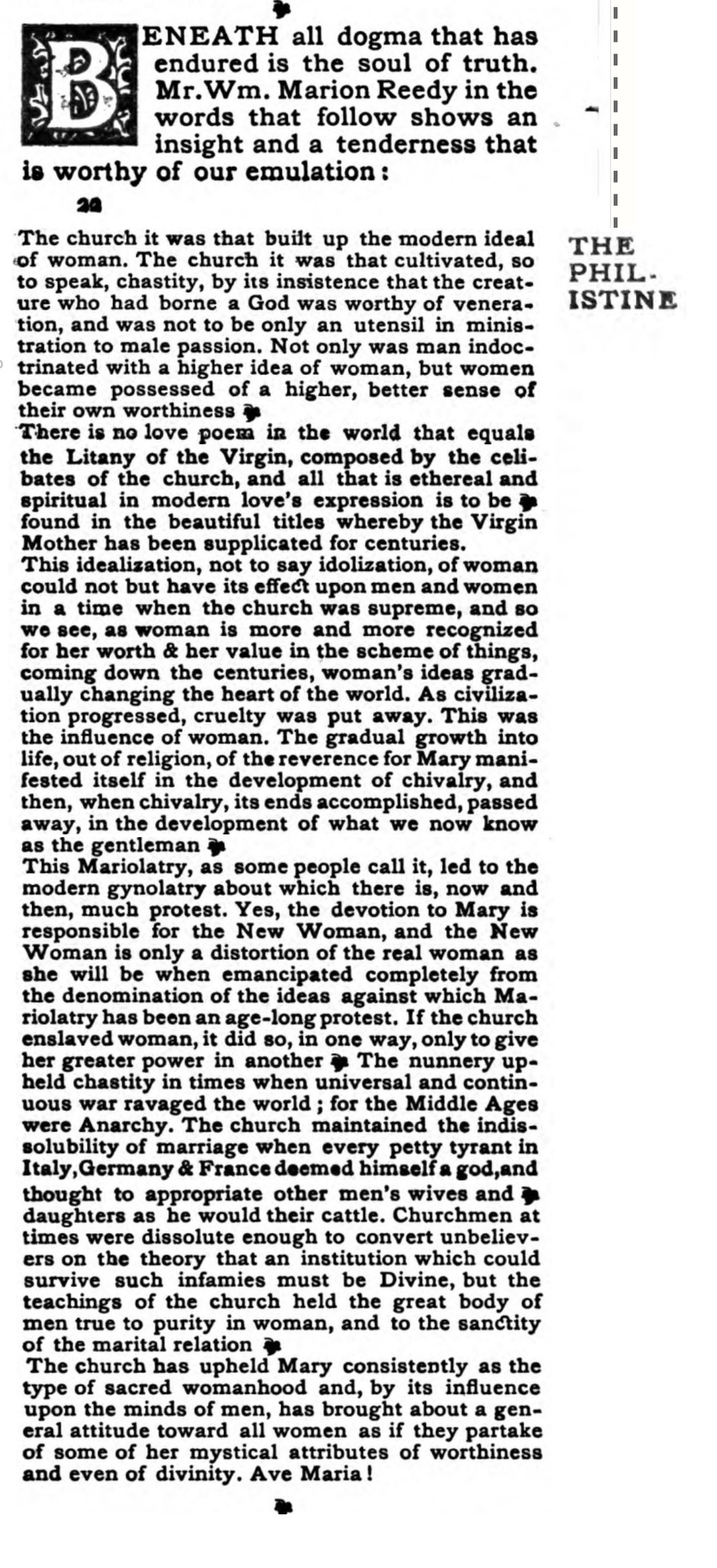
Robert Briffault’s ‘The Troubadours’: discusses Mary’s influence on women’s status (click images to enlarge)
